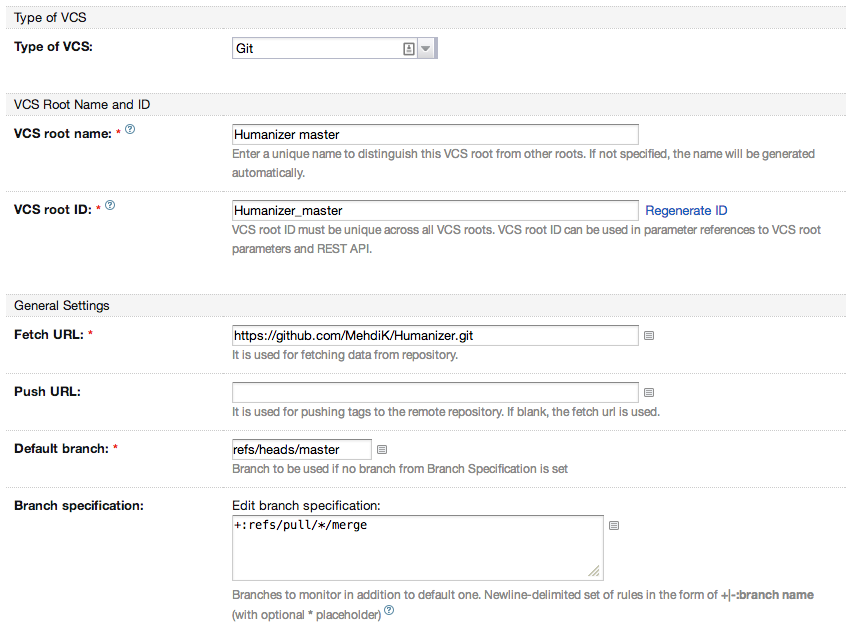
#TEAMCITY CI HOW TO#
This tutorial shows how to send your TeamCity build statuses to Slack. Slack is a great medium for such notifications. Getting timely and precise feedback about your CI builds is crucial to the efficiency of your CI/CD pipelines and to how quickly you can react to the errors caused by your changes. In this video, see how using the Commit Status Publisher build feature in TeamCity can help you report your TeamCity build results back to GitHub. How do you send your CI/CD jobs status to a third-party platform, such as your GitHub repo? The integration with the GitHub issue tracker, to be able to reference issues in your commit messages and have them be clickable in TeamCity.The Pull Request build feature which allows you to automatically build the incoming GitHub pull requests.Using the Commit Status Publisher to post the results of your builds in TeamCity back to GitHub.


In this tutorial, we go over three most important use cases: There are multiple ways to integrate TeamCity and GitHub. Learn how to make an SSH Exec build step a part of your build configurations, and how to upload an SSH key in TeamCity to pass it to the build agents. This tutorial shows an example of a deployment job which requires connecting to a target machine via an SSH and running a deployment script there.
#TEAMCITY CI FULL#
TeamCity then conveniently presents the artifacts within the user interface, displaying the full structure of the folders, subfolders, and files.Ĭonnecting to remote machines via SSH can be an important part of your CI/CD process. TeamCity artifact rules give you the flexibility to organize the artifacts into an optimal structure that fits your project requirements. But they are also a powerful tool that lets you get the most out of working with artifacts in your CI/CD pipeline. This video touches upon configuring a build to produce and upload artifacts, running the build and then downloading the artifacts via the TeamCity interface.Īrtifact rules in TeamCity can be tricky. How do you get that uploaded as part of your CI/CD build in TeamCity? Our example build produces several artifacts such as an application log and Selenium screen recordings. Producing artifacts and propagating them is an essential part of any CI/CD pipeline.
#TEAMCITY CI CODE#
It dives deep into multiple settings and advanced configuration options, touches upon running the builds in Docker, and shows how to add code coverage reports to your builds. This tutorial goes over splitting your command line step into separate ones, and using the dedicated Maven build runner to execute the maven clean package command. If you only use the command line runners in TeamCity, you might be missing out on some of the powerful features that would improve your overall CI/CD experience.
#TEAMCITY CI PASSWORD#
We also touch on adding a password parameter environment variable to propagate artifacts to an AWS S3 bucket using the access key credentials. In this example, our script runs Maven clean package for one of the microservices and then deploys the resulting artifact (a. In this episode, we go over setting up a project in TeamCity, connecting your GitHub repo and creating a single build configuration with a command line build step.

Running command line scripts can be automated with TeamCity. Key general concepts Running command line steps Here is a breakdown of what’s included in the series. Watch the full playlist for the explanations of the key concepts of TeamCity, or browse through the separate videos below. Regardless of how much experience you have, we hope these videos will help you and your team learn something new and achieve a more efficient CI/CD process with TeamCity. These tutorials are meant both for those just starting out with TeamCity as well as those looking to take their skills a step further. The brand new TeamCity video tutorial series is out! The tutorials provide simple, concise, and very hands-on explanations of the key TeamCity concepts. Have you ever been looking for easy-to-consume educational materials on TeamCity?


 0 kommentar(er)
0 kommentar(er)
